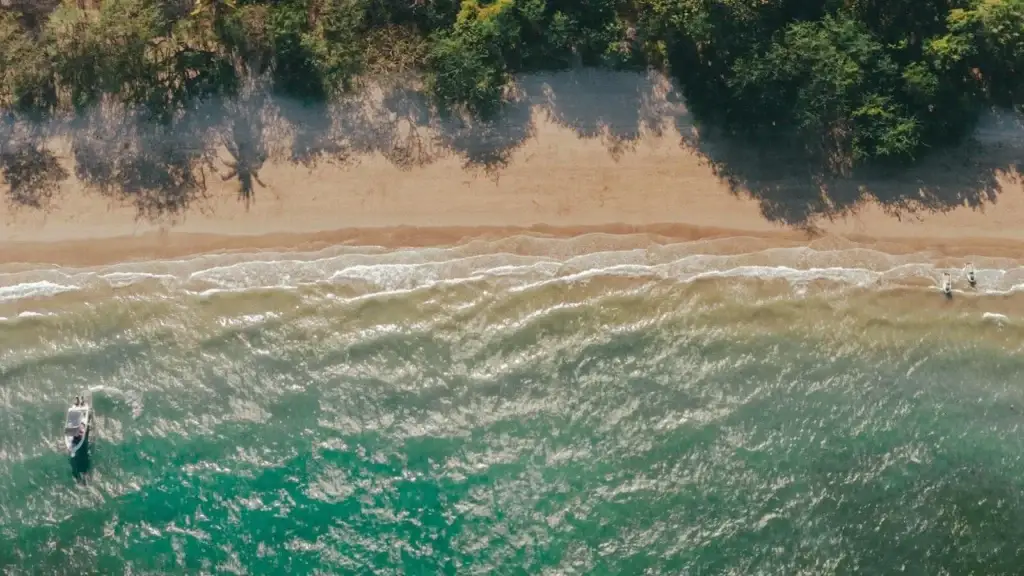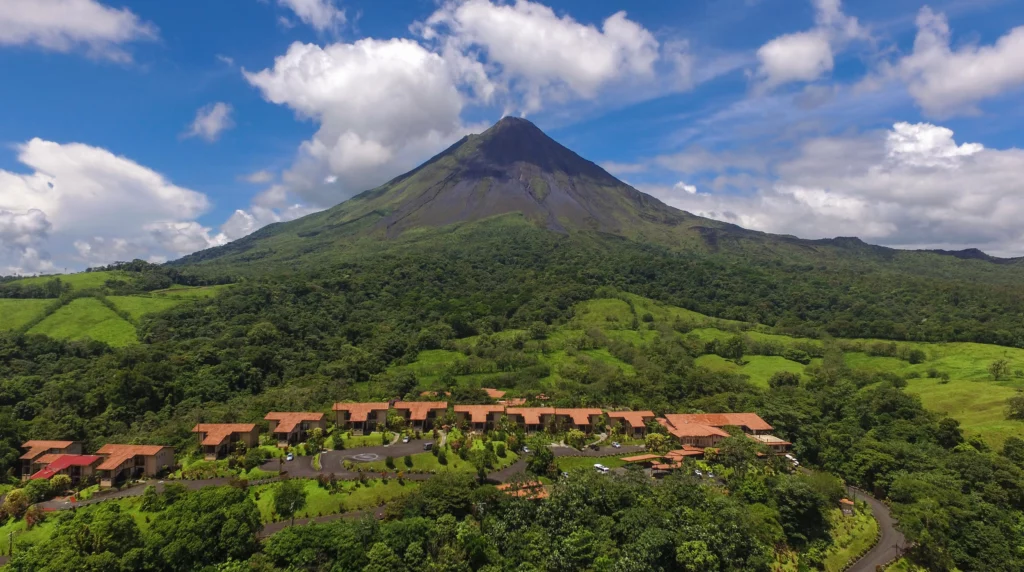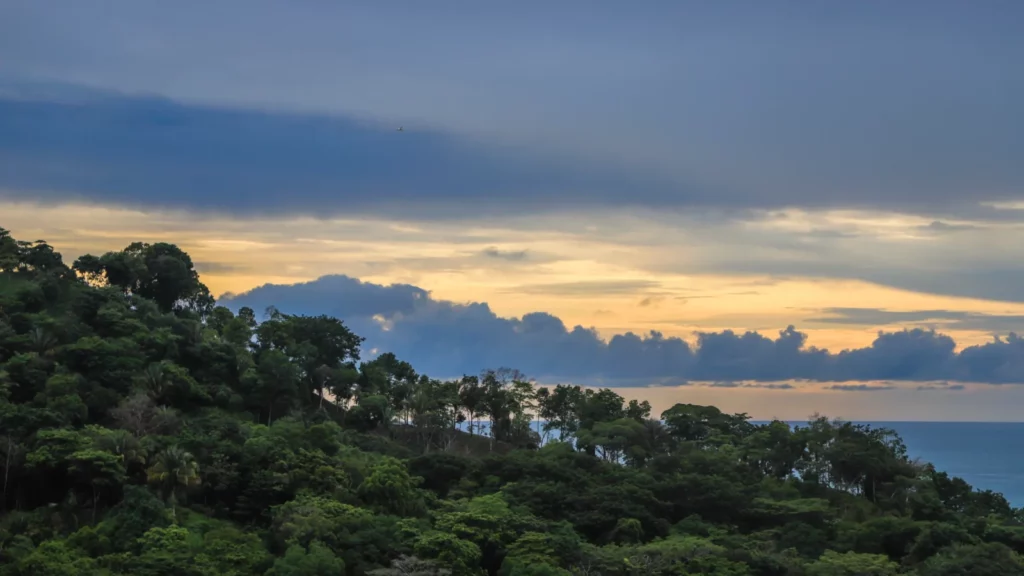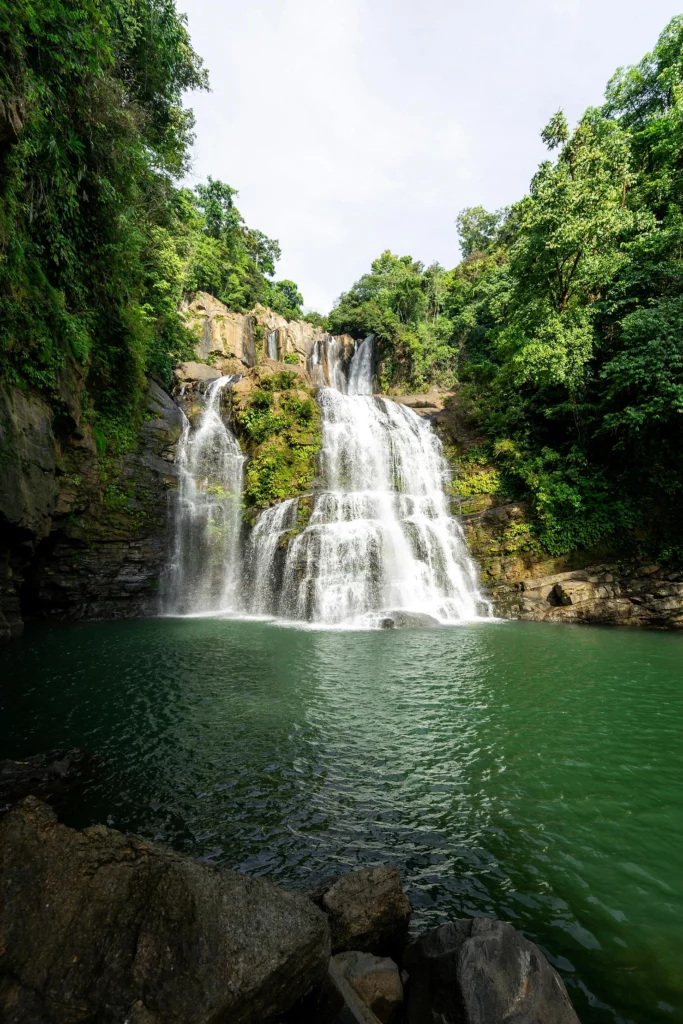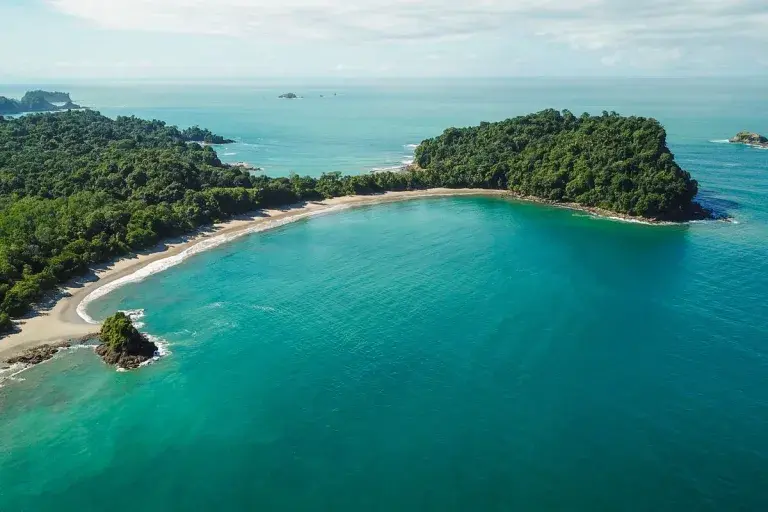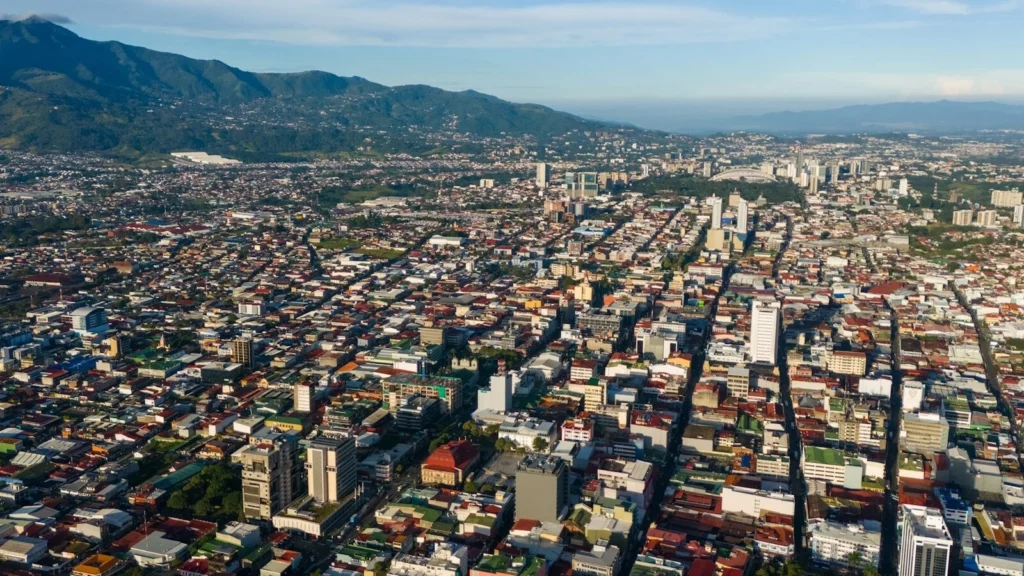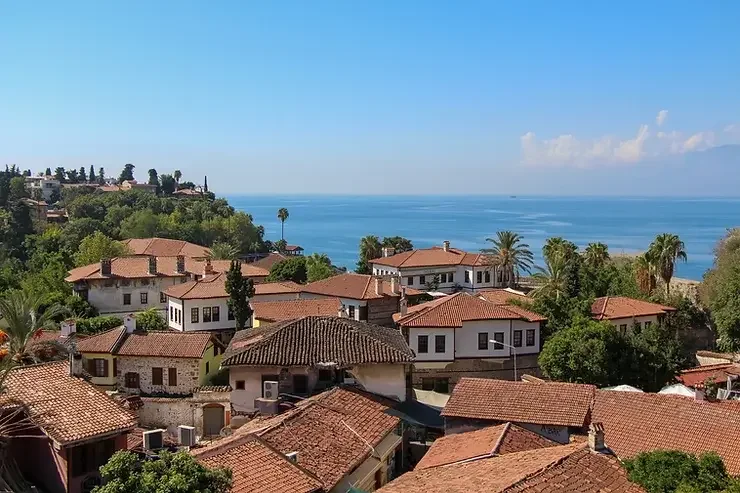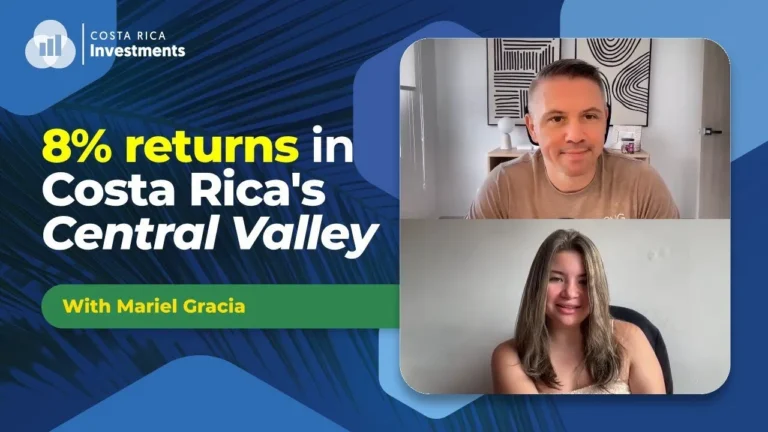Según la Asociación de Residentes de Costa Rica (ARCR), más de 70,000 estadounidenses consideran Costa Rica su hogar, y miles más se mudan cada año. La democracia estable de Costa Rica, la atención médica de alta calidad y la impresionante belleza natural siguen atrayendo a estadounidenses que buscan desde un paraíso para jubilados hasta una sede para nómadas digitales.
Pero encontrar la vivienda adecuada en Costa Rica presenta desafíos únicos. Desde navegar por sistemas legales desconocidos hasta comprender las diferencias regionales en cuanto a clima y servicios, la elección de alojamiento influye significativamente en su experiencia en este paraíso tropical.
Esta guía completa abarca todo lo que necesita saber sobre la vivienda en Costa Rica, ya sea que planee alquilar una vivienda a corto plazo mientras explora o que busque invertir en su propio paraíso. Profundicemos en la información esencial que otras guías omiten.
El mercado inmobiliario de Costa Rica
Costa Rica puede ser más pequeña que Virginia Occidental, pero su mercado inmobiliario varía considerablemente entre regiones. Antes de profundizar en áreas específicas, es necesario comprender qué hace único el panorama inmobiliario de Costa Rica.
Cuatro regiones principales de vivienda en Costa Rica
El Valle Central (Área Metropolitana de San José)
El Valle Central alberga a más del 70% de la población de Costa Rica e incluye la capital, San José, y ciudades aledañas como Escazú, Santa Ana y Heredia. Aquí encontrará:
- Temperaturas moderadas (65-80 °F durante todo el año) debido a la mayor altitud
- Mejor infraestructura con servicios públicos confiables e Internet
- Cercanía a centros comerciales, hospitales y escuelas internacionales.
- Opciones de vivienda que van desde condominios de lujo hasta comunidades cerradas.
- Precios más asequibles que las zonas costeras para una calidad comparable
La Costa del Pacífico (Guanacaste, Manuel Antonio)
La costa pacífica de Costa Rica atrae a los amantes de la playa y a quienes buscan un estilo de vida más relajado:
- Temperaturas más cálidas (75-95 °F según la temporada)
- Zonas turísticas y de expatriados populares como Tamarindo, Nosara y Manuel Antonio
- Costos de vivienda más altos, particularmente para propiedades con vista al mar
- Más alquileres vacacionales compiten con viviendas de larga estancia
- Actividad comercial estacional que afecta la disponibilidad del servicio
La Costa Caribe (Puerto Viejo, Limón)
El lado caribeño menos desarrollado ofrece un ambiente claramente diferente:
- Servicios de playa similares a precios generalmente más bajos que en el Pacífico
- Más precipitaciones durante todo el año crean entornos exuberantes y selváticos.
- Mezcla cultural única de influencias afrocaribeñas, indígenas y latinas.
- Infraestructura menos desarrollada con servicios públicos ocasionalmente poco confiables
- Crecientes comunidades de expatriados en zonas como Puerto Viejo y Cahuita
Las Montañas Centrales (Monteverde, San Ramón)
Para quienes buscan temperaturas más frescas y vistas impresionantes:
- Clima significativamente más frío (60-75 °F) en elevaciones más altas
- Costos de vivienda más bajos que en las zonas de playa premium
- Agricultural communities with authentic Costa Rican culture
- Access to cloud forests, volcanos, and breathtaking views
- Growing infrastructure supporting remote workers and retirees
Key Takeaway: The region you choose dramatically affects your daily lifestyle, costs, and necessary housing features. Consider seasonal visits to different regions before committing to long-term housing.
Housing Types: From Luxury Villas to Eco-Cabinas
Costa Rica offers diverse housing options to match different lifestyles and budgets:
Condominiums
- Popular in urban areas and beach towns
- Range from basic to luxury with amenities like pools and security
- Monthly HOA fees typically $100-500 depending on amenities
- More stable utility service than individual homes
- Easier maintenance for part-time residents
Houses (Casas)
- Standalone homes vary enormously in quality and price
- Typical Costa Rican homes feature open designs with outdoor living spaces
- Urban homes often have security walls or fences
- Rural homes may include larger land parcels
- Construction quality varies dramatically – newer homes built to international standards command premium prices
Gated Communities
- Increasingly popular with expats concerned about security
- Typically feature shared amenities (pools, clubhouses, gyms)
- Higher purchase prices and monthly maintenance fees
- Often populated primarily by other expats
- May feel isolated from authentic Costa Rican culture
Eco-Friendly Homes
- Growing segment featuring sustainable materials and design
- Solar power systems overcoming utility reliability issues
- Rainwater collection and natural cooling systems
- Often located in more remote settings
- Typically 15-30% more expensive initially but with lower operating costs
American clients are often surprised by construction standards here. Always look for homes built to U.S. or Canadian codes if you want familiar quality. Local construction can be excellent but different from North American expectations.
Key Takeaway: Understanding different housing types helps narrow your search. Most successful expats recommend renting for 6-12 months before purchasing to determine your preferences in the Costa Rican context.
The Impact of Tourism on Housing Availability and Prices
Tourism significantly impacts Costa Rica’s housing market, particularly in popular beach areas:
- Vacation rental demand drives up long-term rental prices in tourist areas
- High season (December-April) sees rental prices increase 30-50%
- Many landlords prefer short-term vacation rentals to long-term tenants
- Beach properties may sit empty during green season (May-November)
- Inland properties less affected by tourism cycles
This tourism influence creates both challenges and opportunities. Many owners earn enough during high season to cover their annual costs, making low-season rentals flexible. Smart expats negotiate year-round rentals at discounted rates, offering owners stability in exchange for lower monthly rates.
Key Takeaway: Understanding tourism patterns helps you negotiate better deals. Long-term leases starting in the rainy season often secure better rates, while flexibility on location can significantly reduce costs.
What’s Your Budget? Real Costa Rica Housing Costs in 2025
Rental Costs by Region: From Budget to Luxury
Monthly rental prices vary significantly by region, property type, and proximity to amenities:
Central Valley (San José Area)
- Studio/1-bedroom apartment in city center: $500-800
- 2-3 bedroom apartment/condo in upscale area: $800-2,500
- 3+ bedroom house in gated community: $1,200-3,000+
- Luxury villa in Escazú or Santa Ana: $2,500-5,000+
Pacific Coast (Popular Beach Towns)
- Studio/1-bedroom near beach: $700-1,500
- 2-bedroom condo with amenities: $1,500-2,500
- 3+ bedroom house walking distance to beach: $2,500-3,500
- Luxury beachfront villa: $3,000-10,000+
Caribbean Coast
- Studio/1-bedroom near beach: $500-900
- 2-bedroom house in town: $700-1,400
- 3+ bedroom house near beach: $1,200-2,500
- Luxury property: $2,000-4,500
Central Mountains
- 1-bedroom rustic cabin: $400-700
- 2-bedroom house with views: $600-1,100
- 3+ bedroom home on large property: $900-1,800
- Luxury mountain estate: $1,800-4,000
Sarah W, who relocated from Texas in 2023, advises: “We saved nearly $800 monthly by choosing a home 15 minutes from the beach rather than beachfront. We still enjoy beach days but have better infrastructure, more space, and significantly lower costs.”
Rental costs typically include gardening maintenance but rarely include utilities. Internet service adds $50-100 monthly depending on speed and reliability requirements.
Key Takeaway: The location flexibility pays significant dividends. Considering properties even 15-30 minutes from prime areas can reduce costs by 25-40% while maintaining access to desired amenities.
The True Cost of Buying Property in Costa Rica
Purchase prices display similar regional variations, with additional consideration for transaction costs:
Property Purchase Price Ranges:
- Central Valley condos: $120,000-300,000+
- Central Valley houses: $150,000-500,000+
- Pacific Coast condos: $150,000-450,000+
- Pacific Coast houses: $200,000-1,000,000+
- Caribbean properties: $150,000-600,000+
- Mountain properties: $120,000-500,000+
Additional Costs When Purchasing:
- Legal fees: 1-1.5% of purchase price
- Transfer tax: 1.5% of registered property value
- Stamps and registration: Approximately 0.5%
- Notary fees: 0.5-1% depending on complexity
- Property inspection: $350-700
Unlike the U.S., financing options for foreigners are limited in Costa Rica. Some developers offer owner financing (typically 3-5 years with 30-50% down payment), while a few Costa Rican banks offer mortgages to qualified foreign buyers at significantly higher interest rates than Americans expect (7-12% annual rates compared to U.S. rates).
Most American buyers either pay cash or arrange financing in the U.S. through home equity loans or retirement account loans. The higher Costa Rican interest rates make local financing unattractive for most foreign buyers.
Key Takeaway: Budget for approximately 4% above the purchase price for closing costs. Most foreign buyers should plan to pay cash or arrange financing through U.S. sources rather than Costa Rican banks.
Hidden Costs Every Expat Should Know About
Beyond purchase or rental costs, several ongoing expenses affect your total housing budget:
Utilities:
- Electricity: $100-400+ monthly (highly variable based on air conditioning use)
- Water: $20-60 monthly
- Internet: $50-120 monthly for reliable service
- Propane (cooking): $20-40 monthly
- Cable/Satellite TV: $40-80 monthly
Maintenance:
- Pool maintenance: $200-400 monthly
- Gardener: $100-300 monthly depending on property size
- Maid service: $15-25 per visit
- General maintenance: Budget 1-2% of property value annually
- Repairs: Typically higher than in the U.S. due to humidity and climate
Additional Expenses:
- Property tax: Approximately 0.25% of registered value annually
- Luxury home tax: Additional for properties valued over $230,000
- Homeowner’s insurance: $1,000-2,500 annually
- Corporation fees (if using a corporation to hold property): $200-400 annually
- Resident association fees: $100-500 monthly in gated communities
Key Takeaway: Budget 30-50% above your base rent or mortgage for utilities, maintenance, and additional costs. Homes designed for the tropical climate with natural cooling and energy efficiency offer significant long-term savings.
Finding Your Ideal Location: Where Americans Live in Costa Rica
Top 5 Expat-Friendly Communities with Strong Infrastructure
These established areas offer easier transitions for new expats with established services catering to English speakers:
Escazú and Santa Ana (Central Valley)
- Pros: International schools, luxury amenities, excellent healthcare, reliable utilities
- Cons: Traffic congestion, higher costs, less “authentic” Costa Rican experience
- Ideal for: Families with children, those requiring frequent medical services, urban professionals
- Notable features: MultiPlaza mall, CIMA hospital, international restaurant scene
Jennifer Atkinson, mother of two, explains her family’s choice: “We needed the international school options and healthcare access of Escazú. The added cost is worth having amenities our children need during the transition to life in Costa Rica.”
Tamarindo/Flamingo (Guanacaste)
- Pros: Beautiful beaches, established expat community, English widely spoken, growing infrastructure
- Cons: Tourist pricing, seasonal business closures, water shortages possible in dry season
- Ideal for: Beach lovers, surf enthusiasts, those seeking active social scenes
- Notable features: Consistent surf breaks, international restaurants, regular community events
Atenas/Grecia (Central Valley)
- Pros: Temperate climate, lower costs than San José area, authentic towns with modern amenities
- Cons: Fewer English services, limited nightlife, requires car for access
- Ideal for: Retirees, budget-conscious expats, those seeking authentic culture with enough conveniences
- Notable features: Vibrant central markets, regular expat meetups, lower humidity than coastal areas
Manuel Antonio/Quepos Area
- Pros: Stunning natural beauty, national park access, blend of beach and jungle
- Cons: Higher prices, heavy tourism impacts, significant rainy season
- Ideal for: Nature enthusiasts, vacation rental investors, restaurant/hospitality entrepreneurs
- Notable features: Manuel Antonio National Park, marina facilities, diverse wildlife
Lake Arenal Region
- Pros: Breathtaking views, cooler temperatures, affordable properties, outdoor recreation
- Cons: Remote from major services, rainier weather, fewer shopping options
- Ideal for: Nature lovers, privacy seekers, budget-conscious buyers seeking views
- Notable features: Volcano views, windsurfing conditions, growing remote worker community
Key Takeaway: Most successful expats recommend visiting multiple regions before committing to housing. Consider short-term rentals in 2-3 different areas to experience various lifestyles before deciding.
Up-and-Coming Areas with Better Value
These emerging expat destinations offer potentially better value while still providing necessary amenities:
Uvita/Ojochal (South Pacific)
- Why it’s rising: Less developed than northern Pacific areas with similar natural beauty
- Value proposition: 25-40% lower housing costs than Tamarindo/Manuel Antonio
- Infrastructure status: Improving gradually with new businesses opening regularly
- Perfect for: Those seeking natural beauty with fewer tourists and lower costs
San Ramón (Central Valley)
- Why it’s rising: Authentic city with growing expat community and lower costs
- Value proposition: 30-50% lower costs than Escazú with similar climate benefits
- Infrastructure status: Good basic infrastructure with expanding expat services
- Perfect for: Those seeking authentic Costa Rican life with just enough conveniences
Sámara (Nicoya Peninsula)
- Why it’s rising: Quieter alternative to Tamarindo with beautiful beaches
- Value proposition: 20-30% lower housing costs than Tamarindo
- Infrastructure status: Adequate for basic needs with growing amenities
- Perfect for: Beach lovers seeking more laid-back environment
Puerto Viejo (Caribbean Coast)
- Why it’s rising: Unique cultural mix with growing digital nomad presence
- Value proposition: 40-50% lower than comparable Pacific properties
- Infrastructure status: Improving but still less developed than Pacific coast
- Perfect for: Free spirits, cultural enthusiasts, those seeking Caribbean lifestyle
Key Takeaway: Emerging areas offer better value but require more flexibility and adaptation. They typically attract more independent expats comfortable with immersion in local culture.
Matching Your Lifestyle Needs to the Right Location
Different life situations create different housing priorities:
For Retirees:
- Prioritize accessibility (fewer stairs/hills) and proximity to healthcare
- Consider areas with established expat communities for social connections
- Evaluate transportation options if driving is a concern
- Best matches: Atenas, Grecia, parts of Escazú, San Ramón
For Families with Children:
- International school access may dictate location (primarily Central Valley)
- Consider activity options for children
- Evaluate safety and community feel
- Best matches: Escazú, Santa Ana, Ciudad Colón, Heredia
For Digital Nomads and Remote Workers:
- Reliable internet becomes the top priority
- Consider coworking space availability
- Look for areas with cafés and social opportunities
- Best matches: Santa Teresa, Nosara, parts of San José, Jacó
For Nature Enthusiasts:
- Prioritize proximity to national parks and protected areas
- Consider properties with larger land parcels
- Evaluate road access during rainy season
- Best matches: Monteverde, Lake Arenal region, Osa Peninsula, Puerto Viejo
Key Takeaway: Your stage of life and personal priorities significantly impact location suitability. Take time to create a prioritized list of must-haves versus nice-to-haves to guide your search.
Rental Market: From Search to Signing
Finding reliable rental properties remains one of the biggest challenges for newcomers to Costa Rica. Here’s how to navigate the process effectively.
Where to Find Legitimate Rental Listings
Unlike the U.S. with its centralized MLS systems, Costa Rica’s rental market is fragmented across multiple platforms:
Online Platforms:
- Facebook Groups: “Costa Rica Real Estate,” “Rentals in [specific area],” and local expat groups
- Specialized Websites: encuentra24.com, craiglist.co.cr, and americatica.com
- Local Real Estate Agencies: Century 21, ReMax, and local agencies typically have rental divisions
- Vacation Rental Sites: Airbnb and VRBO for short-term rentals that might convert to long-term
In-Person Methods:
- Local bulletin boards in popular expat gathering places
- Word-of-mouth within expat communities
- Direct inquiries at properties with “Se Alquila” (For Rent) signs
- Conversations with local business owners who often know of available properties
Start your search online before arriving, but reserve at least 30-50% of your options for on-the-ground discoveries. Many of the best rentals never appear online because they’re filled through local networks.
Key Takeaway: Cast a wide net using multiple search methods. Successful rentals often come through unexpected connections rather than formal listings.
Red Flags and Scams to Avoid
Unfortunately, foreign renters sometimes become targets for scams. Watch for these warning signs:
Common Rental Scams:
- Requests for wire transfers or deposits before viewing the property
- Unusually low prices for desirable areas
- “Owners” who can’t meet in person or show the property
- Pressure to decide immediately due to “other interested parties”
- Properties without clear photos of all rooms
- Communication only via email (never phone or video call)
Verification Steps:
- Always view properties in person or have a trusted local contact do so
- Verify property ownership through the National Registry (Registro Nacional)
- Request to see the owner’s identification and property title
- Use escrow services for deposits rather than direct transfers
- Start with shorter lease terms until you confirm reliability
- Get all agreements in writing, in both Spanish and English
Key Takeaway: Never send money for properties you haven’t personally verified. When possible, work with established agencies or get referrals from other expats for private rentals.
Typical Rental Agreements and Terms
Costa Rican rental contracts differ from American standards in several important ways:
Contract Duration of standard residential leases run 3 years by law, though shorter terms can be negotiated. Month-to-month arrangements should still have written terms, and vacation rentals (under 3 months) fall under different regulations.
Deposits and Payments. Security deposits typically equal one month’s rent, and the first month’s rent is also paid in advance. Payment is usually expected in cash or local bank transfer. Receipts (recibos) should be provided for all payments
Tenant Rights and Responsibilities. Tenants typically responsible for minor repairs (under $100). Landlords are responsible for structural and major system repairs. Rent increases limited to 15% maximum annually for colones-based contracts, while dollar-denominated contracts can specify different terms.
Breaking a Lease. Three-month notice is typically required for early termination, and landlords can require payment for remaining months if proper notice is not given. Security deposit returned within one month of vacating (minus legitimate deductions).
Always have your rental contract reviewed by a bilingual lawyer before signing. A few hundred dollars for legal review can save thousands in disputes. Ensure the contract specifies exactly which repairs are your responsibility versus the landlord’s.
Sample Lease Clauses to Watch For: Utilities responsibility (who pays for what), pet policies and additional deposits, guest policies for extended visitors, maintenance expectations for garden and pool areas, renewal terms and notice periods, and dispute resolution procedures.
Key Takeaway: Never sign a rental agreement without understanding all terms. An investment in legal review before signing prevents costly misunderstandings later.
Long-Term Housing
Weather Impacts on Housing: Rainy Season Realities
Costa Rica’s tropical climate creates unique housing challenges:
Regional Climate Variations:
- Central Valley: Moderate temperatures, distinct rainy/dry seasons
- Pacific Coast: Hot temperatures, pronounced dry season (Dec-April)
- Caribbean Coast: Humid year-round, rain distributed throughout year
- Mountain Areas: Cooler temperatures, frequent mist and cloud cover
Rainy Season:
- Roof integrity becomes critical during heavy downpours
- Drainage systems prevent property flooding
- Covered outdoor areas extend livable space during rain
- Dehumidifiers and air circulation prevent mold growth
- Road access may be compromised during heavy rains
Tips on design features for the tropics include using cross-ventilation to reduce air conditioning dependence, having covered outdoor spaces, and proper roof overhangs to protect from sun and rain, and using mold-resistant materials to reduce maintenance.
Key Takeaway: Housing designed specifically for tropical conditions provides significant comfort and maintenance advantages. Prioritize properties with climate-appropriate design features rather than focusing solely on aesthetics.
Peace of Mind
Security concerns vary dramatically by location:
Neighborhood Security Variations:
- Gated communities offer controlled access and security staff
- Urban areas typically require more security measures
- Rural areas may have limited police response capability
- Beach towns experience seasonal fluctuations in property crime
Typical Security Measures:
- Perimeter walls or fences with secure gates
- Security bars on windows (decorative designs available)
- Motion-detector lighting and alarm systems
- Security cameras with remote monitoring
- Security guard services in some areas
Balanced Perspective:
Costa Rica sigue siendo uno de los países más seguros de Latinoamérica, pero los delitos contra la propiedad existen. La mejor seguridad combina elementos de disuasión física con conexiones comunitarias. Conocer a los vecinos e integrarse en la comunidad suele ofrecer una mayor seguridad que solo muros y cámaras.
Conclusión clave: Las necesidades de seguridad varían según la ubicación. Investigue las estadísticas de delincuencia de barrios específicos y consulte con expatriados locales sobre las precauciones necesarias en lugar de basarse en información generalizada.
Creando una comunidad: construyendo tu red de apoyo para expatriados
Las experiencias de vivienda exitosas dependen de más que las estructuras físicas:
Encontrar conexiones comunitarias:
- Los grupos de Facebook para regiones específicas conectan a los expatriados
- Se celebran periódicamente reuniones de expatriados en zonas populares.
- Las oportunidades de voluntariado crean relaciones locales significativas
- Los grupos de intercambio de idiomas conectan a los expatriados con las comunidades locales
- Las actividades recreativas (clases de yoga, clubes de golf, etc.) construyen redes sociales
Recursos comunitarios:
- Asociación de Residentes de Costa Rica (ARCR) brinda servicios de apoyo
- Las organizaciones regionales de expatriados ofrecen orientación para recién llegados
- Grupos de Facebook como “Expatriados en Costa Rica” comparten consejos prácticos
- Los grupos específicos de cada área proporcionan información hiperlocal
Conclusión clave: Considere las oportunidades de desarrollo comunitario al elegir alojamiento. Las zonas con una población mixta de expatriados y locales suelen ofrecer experiencias a largo plazo más enriquecedoras que las zonas exclusivamente locales o exclusivamente de expatriados.
